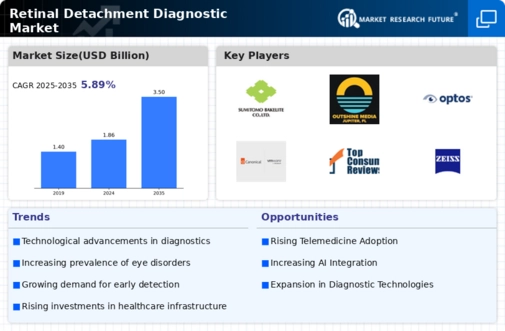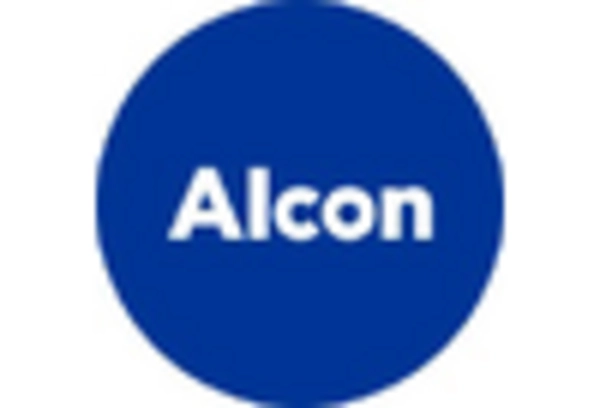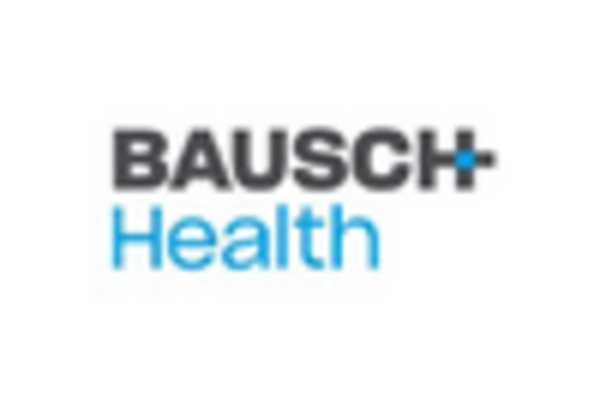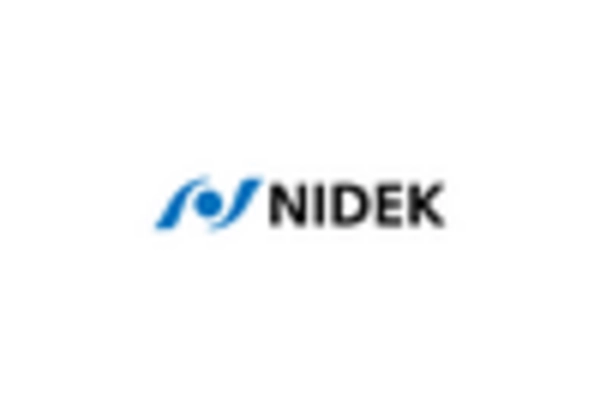Growing Demand for Early Diagnosis
The emphasis on early diagnosis in ophthalmology is a critical driver for the Retinal Detachment Diagnostic Market. Early detection of retinal detachment can significantly improve treatment outcomes and reduce the risk of permanent vision loss. As awareness of eye health increases, patients are more likely to seek timely medical attention, thereby driving demand for diagnostic services. Market analysis indicates that the early diagnosis segment is expected to grow at a rate of 7% over the next few years. This trend underscores the importance of accessible and efficient diagnostic tools, which are essential for healthcare providers in the Retinal Detachment Diagnostic Market to meet patient needs effectively.
Rising Incidence of Retinal Detachment
The increasing prevalence of retinal detachment cases is a notable driver for the Retinal Detachment Diagnostic Market. Factors such as aging populations and the rise in myopia contribute to this trend. According to recent data, the incidence of retinal detachment is estimated to be around 1 in 10,000 individuals annually, with higher rates observed in older adults. This growing patient population necessitates advanced diagnostic tools and technologies, thereby propelling market growth. As healthcare providers seek to improve patient outcomes, the demand for effective diagnostic solutions is likely to rise, indicating a robust market potential for innovative products in the Retinal Detachment Diagnostic Market.
Advancements in Diagnostic Technologies
Technological innovations in diagnostic imaging are transforming the Retinal Detachment Diagnostic Market. The introduction of high-resolution optical coherence tomography (OCT) and enhanced ultrasound techniques has significantly improved the accuracy of retinal detachment diagnoses. These advancements allow for earlier detection and better management of the condition, which is crucial for preserving vision. Market data suggests that the adoption of these technologies is increasing, with a projected growth rate of approximately 8% annually. As healthcare facilities invest in state-of-the-art diagnostic equipment, the Retinal Detachment Diagnostic Market is poised for substantial growth, driven by the need for precision and efficiency in patient care.
Regulatory Support for Advanced Diagnostics
Regulatory bodies are increasingly supporting the development and approval of advanced diagnostic technologies, which serves as a significant driver for the Retinal Detachment Diagnostic Market. Streamlined approval processes and favorable regulations encourage manufacturers to innovate and bring new diagnostic tools to market. This regulatory environment fosters competition and enhances the availability of cutting-edge solutions for retinal detachment diagnosis. Recent initiatives by health authorities to expedite the review of ophthalmic devices indicate a commitment to improving patient care. As a result, the Retinal Detachment Diagnostic Market is likely to experience accelerated growth, driven by the introduction of new and effective diagnostic technologies.
Increase in Research and Development Activities
The surge in research and development activities within the ophthalmic sector is influencing the Retinal Detachment Diagnostic Market positively. Pharmaceutical companies and medical device manufacturers are increasingly investing in R&D to develop innovative diagnostic solutions. This focus on innovation is likely to lead to the introduction of novel imaging techniques and diagnostic tools that enhance the accuracy and efficiency of retinal detachment detection. Data suggests that R&D spending in the ophthalmology sector has seen a steady increase, with projections indicating a growth rate of 6% annually. Such investments are expected to yield advanced products that will drive the Retinal Detachment Diagnostic Market forward.

















Leave a Comment